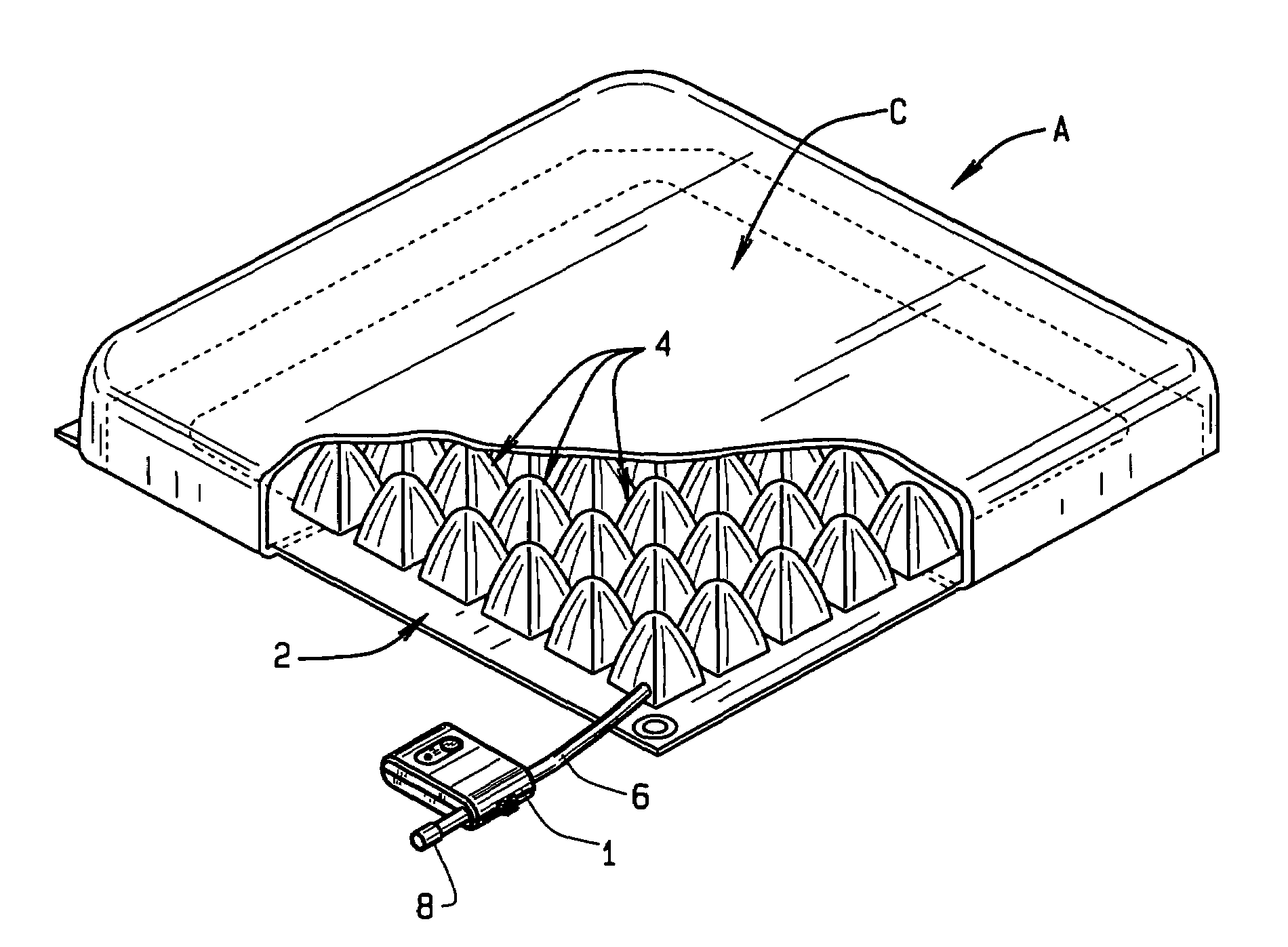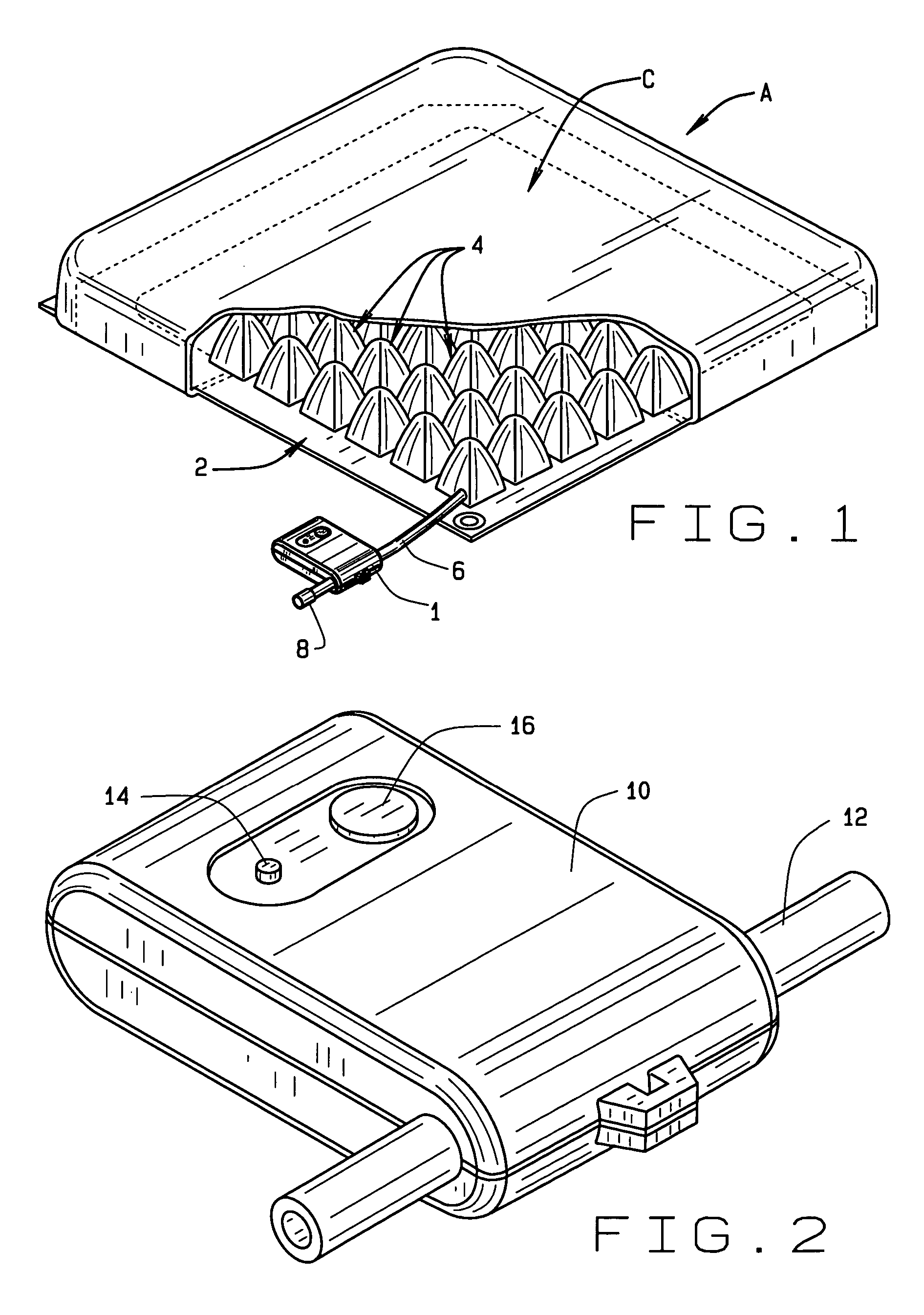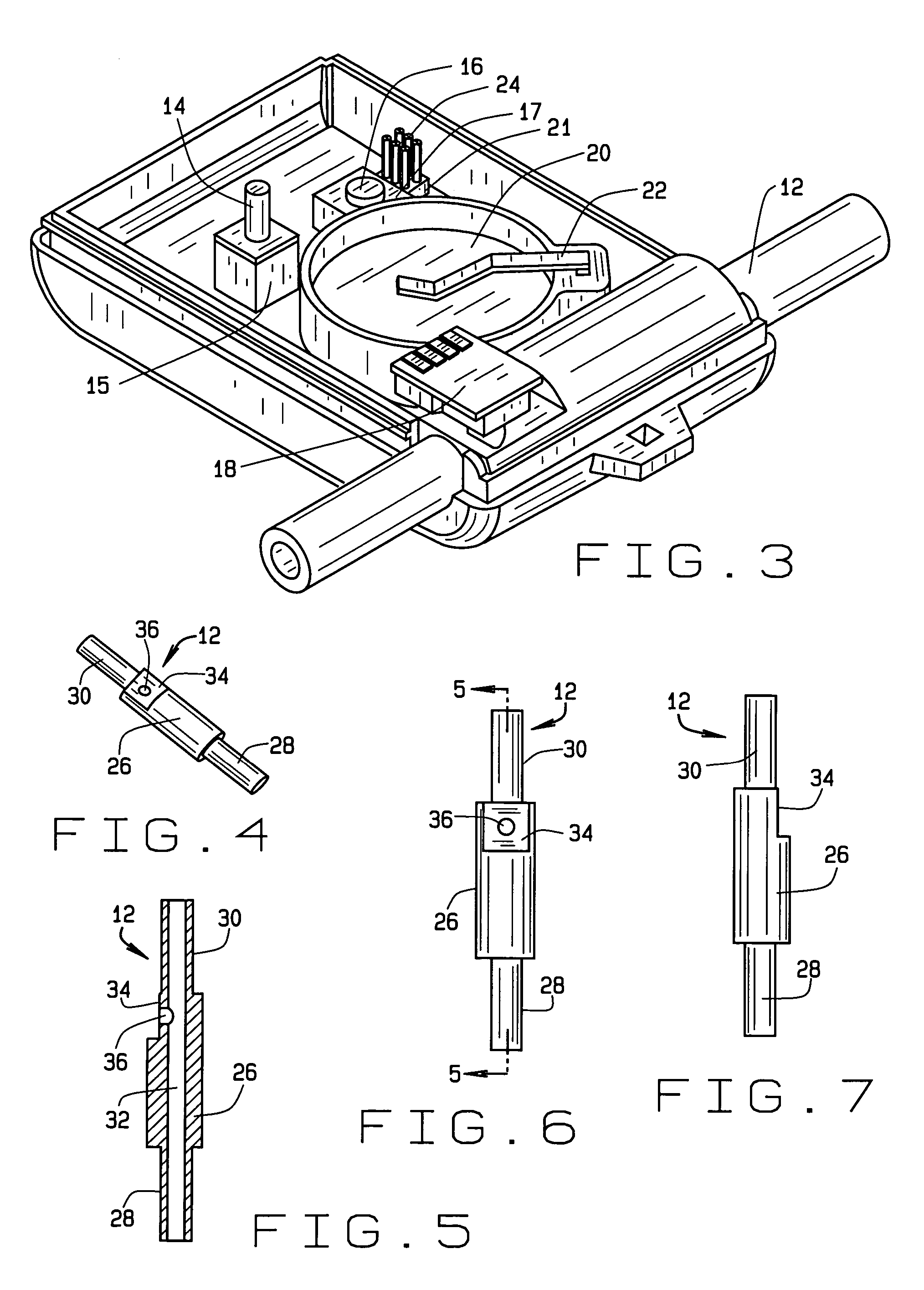Valve mounted bottom out sensor
a sensor and valve technology, applied in the field of seat cushions, can solve the problems of reducing the effectiveness of the cushion in preventing or treating pressure sores, and affecting the comfort of the sea
- Summary
- Abstract
- Description
- Claims
- Application Information
AI Technical Summary
Benefits of technology
Problems solved by technology
Method used
Image
Examples
Embodiment Construction
[0021]The present invention comprises a sensor for attachment to an air cell cushion to sense a drop in air pressure within the air cell cushion resulting from, or causing, a change in user immersion depth. Although one embodiment of the sensor of the present invention is indicated by numeral 1 in FIGS. 1-3, the broader aspects of the invention include any type of sensor that can be mounted to an inflation valve of an inflatable cushion to detect a change in air pressure is considered to be within the scope of the invention.
[0022]Sensor 1 is shown attached to an air cell cushion A in FIG. 1. Air cell cushion A, as shown, is representative of the types of air inflation cushions on which sensor 1 can be employed. The typical air cell cushion A includes a base, and an array of interconnected, upstanding individual air cells 4, usually arranged in transverse and longitudinal rows. An air inflation tube 6 is in fluid communication with one of the cells. The inflation tube includes a scre...
PUM
 Login to View More
Login to View More Abstract
Description
Claims
Application Information
 Login to View More
Login to View More - R&D
- Intellectual Property
- Life Sciences
- Materials
- Tech Scout
- Unparalleled Data Quality
- Higher Quality Content
- 60% Fewer Hallucinations
Browse by: Latest US Patents, China's latest patents, Technical Efficacy Thesaurus, Application Domain, Technology Topic, Popular Technical Reports.
© 2025 PatSnap. All rights reserved.Legal|Privacy policy|Modern Slavery Act Transparency Statement|Sitemap|About US| Contact US: help@patsnap.com



